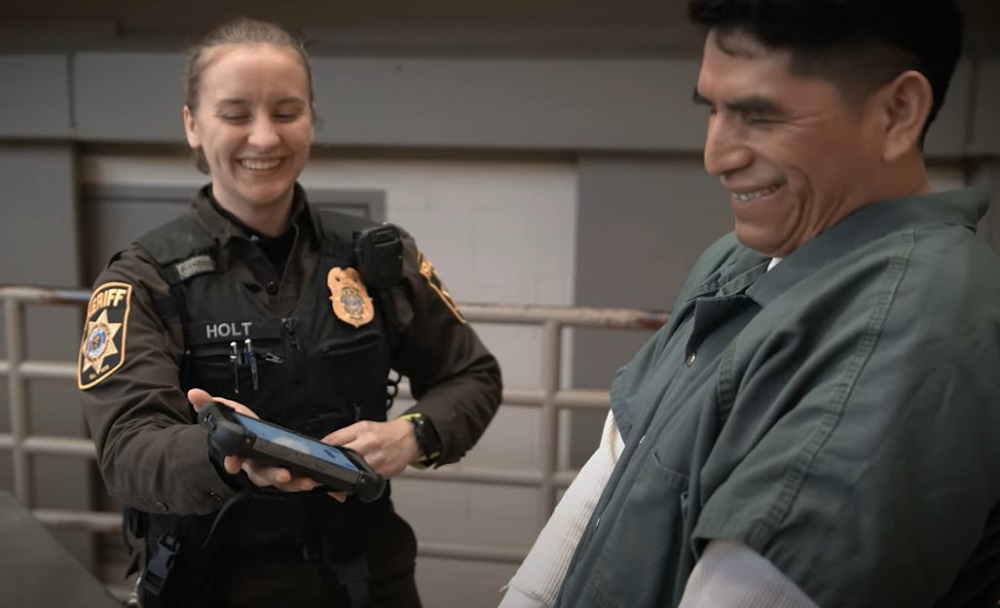Preventing Inmate Suicide
Suicide affects all different kinds of people from all different walks of life. Different cultures. Different races. Different income classes. Different political parties. Even the people from whom you’d least expect it. Everybody who reads this blog has most likely been affected by suicide in one way or another.
This blog will not be a fluffy, light-hearted topic. Suicide is an extremely difficult and heavy conversation that carries an unfair taboo on its shoulders. Let’s discuss the impact of suicide in jails and prisons and how prevention tactics can sometimes be challenging.
Struggling Behind Bars (and Outside the Walls)
Come hell or high water, most people on this planet struggle with mental health in some fashion. Of course, some environments trigger and accelerate anxiety and depression more than others, including jails and prisons. Correctional staff are required to protect inmates and preserve their mental and physical health, no matter what they’re serving time for. Conversely, while inmates serve their time behind bars, officers are working to keep the entire facility's morale up; it takes a large toll on both parties’ mental health.
Suicide is the tenth leading cause of death in the U.S. Every day, approximately 130 Americans die by suicide. In other words, there is one suicide in the U.S. every eleven minutes, leading to over 48,000 American lives taken every year. The scariest part is that only one suicide is successful out of twenty-five attempts (SAVE, 2021). A considerable amount of this statistic comes from the inmates who commit suicide while serving time.
While suicide is the tenth leading cause of death in the entire U.S., it’s the single leading cause of incarcerated deaths. An inmate is more than three times more likely to die from suicide than someone in the general U.S. population. A study from 2000-2019 found that more than 6,200 local jail inmates died by suicide while in custody, while 4,500 state and federal prisoners took their lives. Out of these individuals, most were non-Hispanic White men, aged 55 years or older, who committed a violent crime and died from suffocation or self-strangulation (Davis and McDonald, 2021).
Technically, anyone can suffer from suicide in any situation or setting. So, why are suicide rates elevated inside of jails and prisons? Well, just imagine living inside a correctional facility. There are bound to be some common environmental risk factors including overcrowding, struggle with self-harm ideation, substance abuse or withdrawal, lack of support systems, history of trauma, stress from other inmates, sharing personal spaces, and (obviously) shock. These are only some of the characteristics that come with the experience of incarceration, and they usually kick in within the first nine days.
Therefore, you may have heard the phrase “the first week is the deadliest” before. Roughly 50 percent of inmates who have been held for nine days or less commit suicide, 75 percent of which take place in their cells (Davis and McDonald, 2021). In fact, most in-custody suicides occur in single cells. Therefore, it’s been found that housing inmates in a multioccupancy cell can ironically be safer due to more socialization and observation for the inmate(s) at risk.
Can it be Prevented?
When an inmate is exhibiting suicidal ideation or behavior, they are put on “suicide watch,” or in other words, continuously monitored. These individuals are closely examined for their own safety. When it’s been decided to remove an inmate from suicide watch, it can be extremely challenging to determine if this decision will have a life-or-death consequence. Only a “qualified mental health professional” (QMHP) should be allowed to remove an individual from suicide watch.
The National Commission on Correctional Health Care defines a QMHP as a “psychiatrist, psychologist, psychiatric social worker, licensed professional counselor, psychiatric nurse, or others who by virtue of their education, credentials, and experiences are permitted by law to evaluate and care for the mental health needs of patients” (NCCHA, 2013). It’s a fine line to walk as a QMHP and make that final verdict. Sometimes the fatal consequences that come with making these complex decisions can be carried with QMHP and facility staff for the rest of their lives. Sounds like a lot of pressure on the QMHP, right?
Luckily, there’s a solution to help the QMHP make the final, and correct, decision: implementing security measures. Having the ability to document the inmate’s behavior is crucial. It allows the staff to effectively communicate their observations of the inmate to the QMHP before the final review. Using security tools allows the QMHP to confirm the inmate’s behavior in the 15-minute evaluation matches the same behavior the inmate was exhibiting 24 hours prior. This is important because inmates who are not mentally stable enough will be granted full access back to the general population.
Why? There are many reasons why an inmate may claim they are no longer suicidal and ready to come off suicide watch: they are lonely and don’t want to be housed alone, they don’t want to wear a safety smock, they don’t want staff watching over them for privacy reasons or to successfully commit suicide, they want to engage with other inmates and activities, or, they are truly feeling better and ready to go back to the normal general population (NCCHA, 2013).
Unfortunately, it’s not only those who act on their suicidal ideation who suffer from the event but also those who are emotionally connected to the victim or those who observe the death. Loved ones of the victim struggle with grasping their loss. They can feel fear, guilt, and anger, and can be having suicidal ideation themselves. Family and friends struggle with suicide from accepting the reality of the loss of their loved one. Other inmates or staff who witness suicidal or self-harm acts are at serious risk of experiencing psychological repercussions and post-traumatic stress disorder (PTSD).
As a corrections officer, even having relatively small numbers of inmates who self-harm can still create substantial challenges to the institution and the staff who work there. Self-injurious behaviors consume significant institutional resources through disrupted routines, higher staffing levels, and security risks. Aside from funds and assets, the mental health of the staff is also deeply affected. Staff are likely to experience burnout, apathy, and depression over time (Vera Institute of Justice, 2021).
There isn’t one, easy, concrete answer that can “fix” mental health, much less fix mental health in jails and prisons. However, some steps can be taken to start the elimination process of inmate suicides. Anyone, even corrections officers, can imagine that being confined away from loved ones can hurt and cause mental anguish. Best practices for suicide prevention and response for correctional systems include initial and annual staff training, intake and ongoing assessment, and communication procedures.
For example, if an inmate has a known history of suicidal ideation and is transferred to a new facility, the original facility is responsible for communicating this information and any inmate medical health records to the new facility staff. Therefore, the new facility can take the appropriate precautionary steps regarding suicide watch rather than placing the inmate in the general population. Communication is key, especially when lives are at stake.
If you’re one of the brave 480,000 staff personnel who defends America’s Thin Gray Line, consider helping mitigate inmate suicide risks by performing extra security rounds, talking to the inmates to see how they are doing, or just spending an extra couple of minutes making sure everything is in order. This goes for your team as well. Everyone is affected inside the walls (and sometimes outside, too). Keep an eye out for your staff and make sure they are also holding up OK. Have their backs. Check in on them. Ask how they’re doing. Work with them as a team. Get them help if needed. Using your humility can hopefully avoid another statistic.

References:
Davis, Kelly, and McDonald, Jeff (2021). Suicides in U.S. jails, prisons rose sharply over two decades, federal data shows
National Commission on Correctional Health Care | NCCHA (2013). New Mental Health Certification is First to Address Growing Need for Mental Health Expertise in Corrections
Retrieved from: https://www.ncchc.org/cchp-mh-announce
Suicide Awareness Voices of Education | SAVE (2021). Suicide Statistics and Facts
Retrieved from: https://save.org/about-suicide/suicide-facts/
Vera Institute of Justice (2021). Overview of the problem: Suicide and self-harm in correctional facilities
Retrieved from: https://www.vera.org/publications/culture-of-safety-sentinel-event-suicide-self-harm-correctional-facilities/culture-of-safety/overview

